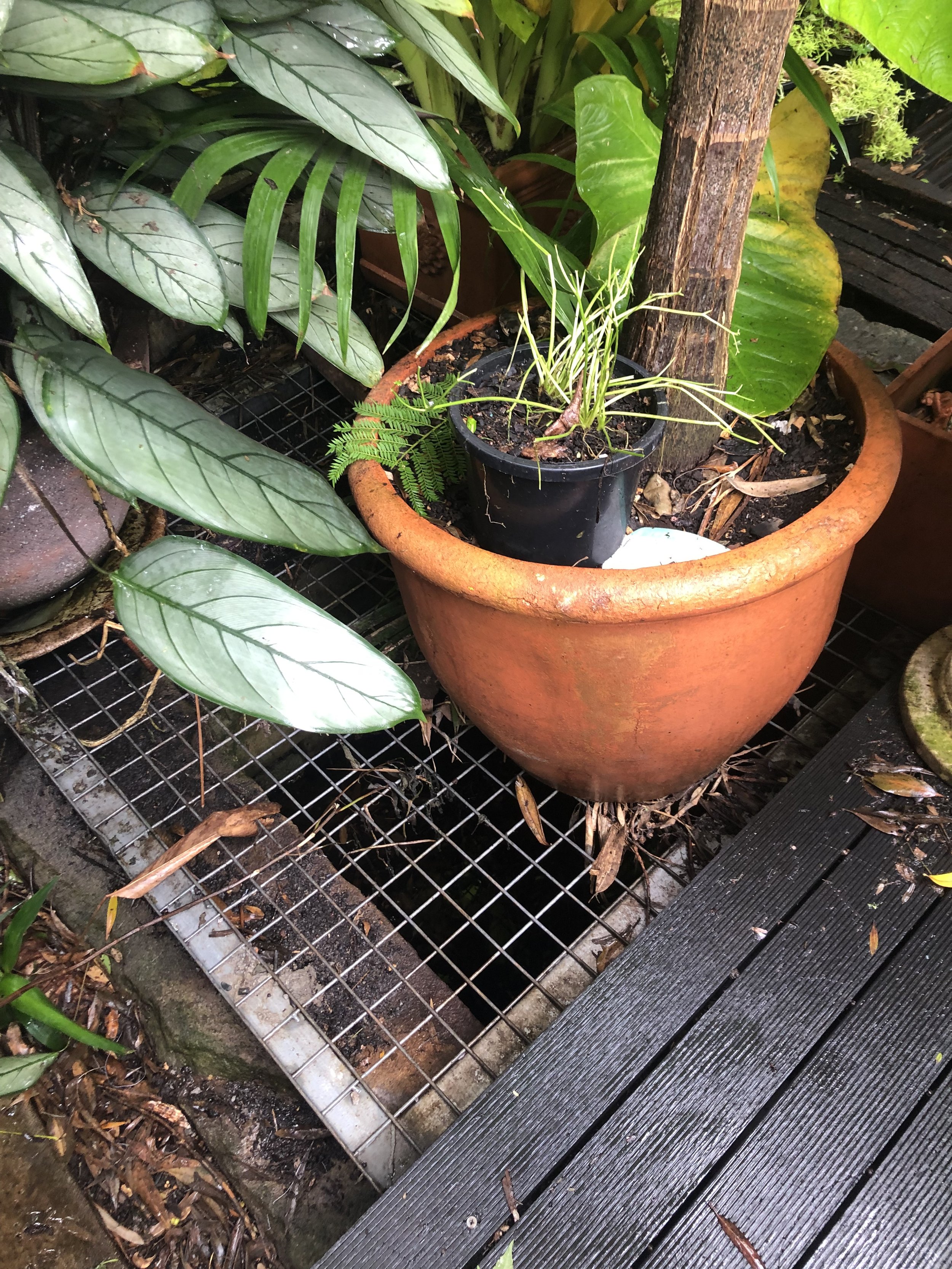• Below the grate are the sandstone block walls of the leaky well, where water drains sideways to the garden through the un-grouted gaps between the sandstone
No Sydney stormwater leaves Sydney’s Sustainable House in biggest recorded storms since 1859.
The first three months of 2022 have been Sydney city’s wettest since records were begun in 1859, 163 years ago.
The ABC reported on 9 March 2022:
“The weather station on Observatory Hill in the CBD has recorded 822 millimetres of rain so far this year.
That's about 70 per cent of the amount that would normally fall in an entire year, or what would have accumulated by August.
The Bureau of Meteorology's (BOM) Dean Narramore says 872mm of rain had fallen across Sydney since January 1.
"That is the wettest start to Sydney so far for any year. It's been a very wet couple of months and that's not far away from almost our annual, which is approaching just over the metre mark for the year," he said.”
Sydney’s Sustainable House is 50 minutes walk from the weather Station at Observatory Hill, about 2 km.
The roof here is 85 square metres. Assuming 822 mm fell on it then that’s about 70,000 litres of rain.
The rain tank from which water is used in the house for drinking, cooking, showers, hot and cold water holds 10,000 litres of water. The daily water use here is about 58 litres a day and three people live here, so about 170 litres of water are used here a day.
With this high amount of rainwater most of it overflowed from the rain tank to the leaky well beside it, an amount of about 50,000 to 60,000 litres of water.
• The concrete rain tank is below the decking, and the leaky well which is beside the tank is below the grate which rests on the sandstone block wall. When full the rainwater flows from the tank to the adjoining leaky well
The leaky well is built beside the rain tank.
Three sides of the well are made of sandstone blocks laid on top of each other without cement or other grout. On the other, exterior side of the sandstone blocks there is about 250 cm of sand then beyond that, the garden soil. The fourth side of the well is the concrete wall of the rain tank. The leaky well is the same height (1.5m) as the rain tank. Any water overflowing from the leaky well would be able to be observed. There is also a higher level pipe to take any emergency overflow to the street, and water to or from it may be also be observed.
More details in my book, Sustainable House, or you’re welcome to inspect it on any of the public tours.
Since January, 2022, in this wettest recorded year, I have observed no water overflow from the leaky well to leave the house site. I typically closely observe the leaky well, and during this extreme rain have observed it day and night.
I’m fascinated by my first-hand observations of the function of the leaky well during this extreme rain. Its performance far exceeds the assumptions of the hydraulic industry, which are often based on computer models not real life, lived experience.
May the drips be with you and upon your roof . . . and your leaky well.



